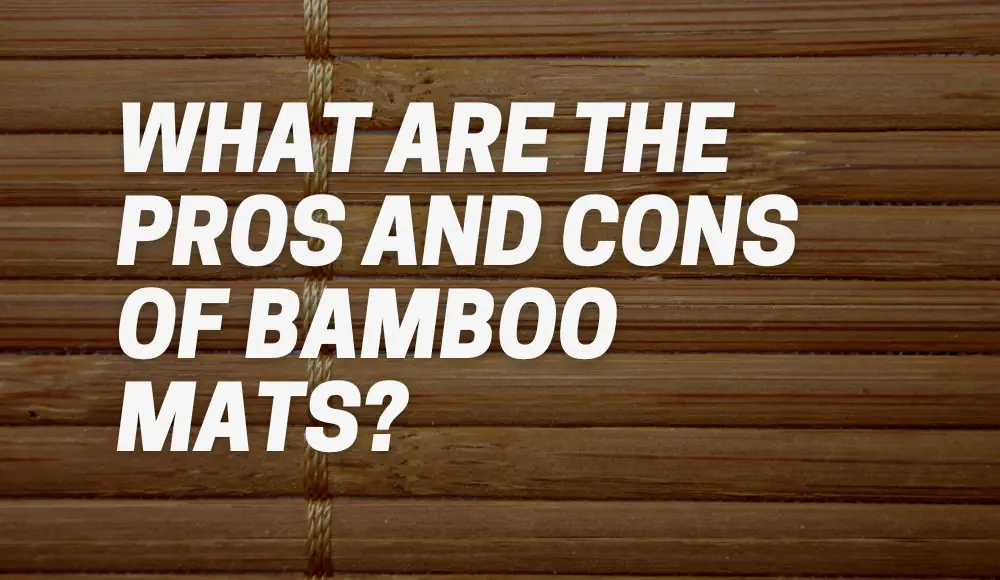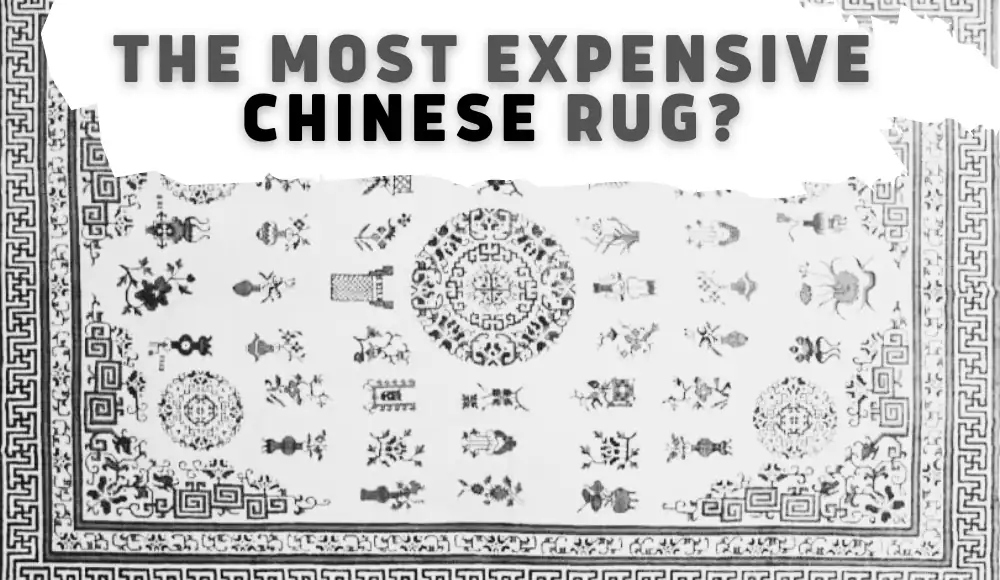Last updated on May 26th, 2024 at 06:25 am
Rug fringe replacement is a topic that often goes unnoticed until the fringes on your beloved rug start to wear out or become damaged. If you’ve ever wondered about the ins and outs of rug fringe replacement, you’re in the right place. In this comprehensive guide, we’ll cover everything you need to know about this essential aspect of rug maintenance. Rug Fringe Replacement: It’s the finishing touch that can make or break the overall look of your rug.
Here, we’ll delve into the world of rug fringes, discussing why they wear out, when to replace them, the different types of fringes, and whether you should attempt a DIY replacement. We’ll also explore the cost, materials, and professional tips for successful fringe replacement.
Why Does Rug Fringe Wear Out?
Rug fringes wear out over time due to various factors such as foot traffic, vacuuming, and exposure to sunlight. Fringe is usually made of cotton or wool, which can fray or become discolored over time. High-quality handmade rugs may have more durable fringes, but wear and tear are inevitable.
Can You Replace Fringe on a Rug?
Yes, you can replace the fringe on a rug. Whether your rug is an heirloom or a newer piece, worn-out fringes can be replaced to restore its original charm. The decision to replace them yourself or seek professional help depends on your DIY skills and the rug’s value.
How to Identify When Rug Fringe Needs Replacement?
Signs that your rug fringe needs replacement include fraying, discoloration, knots coming loose, or significant damage. If the fringes look worn or tattered, it’s a good indication that it’s time for a replacement.
Is DIY Rug Fringe Replacement Advisable?
While some DIY enthusiasts may attempt to replace rug fringes, it’s essential to consider your skill level and the value of your rug. If you’re uncertain about the process, it’s advisable to consult a professional to avoid making costly mistakes.
Can You Add Fringe to a Rug?
If your rug doesn’t have fringes, you can add them to enhance its aesthetics. However, this process should ideally be done by a professional to ensure a seamless and authentic look.
There are a few methods you can consider:
- Sewing or Tying Fringes: If the rug’s structure allows, you can sew or tie fringe onto the edges. This can involve looping yarn or thread through the rug’s edge and knotting it to create a fringe effect.
- Gluing Fringes: You can also use fabric glue to attach pre-made fringe directly onto the edges of the rug. Be sure to choose a strong adhesive that is suitable for the materials involved.
- Professional Restoration: If you want a high-quality finish or have an antique or valuable rug, it might be best to consult a professional rug repair or restoration service. They have the expertise and tools to add fringe while preserving the rug’s integrity.
Some rugs might not be suitable for fringe addition due to their construction or material. Additionally, altering an antique or valuable rug might affect its worth, so it’s important to consider these factors before making any modifications. If in doubt, consulting a professional is advisable.
What Are the Different Types of Rug Fringes?
Rug fringes come in various styles, including straight-cut, knotted, or braided. Each type lends a unique character to the rug. The choice of fringe depends on the rug’s design and personal preference.
Types of Rug Fringes
| Type of Rug Fringe | Description |
|---|---|
| Hand-Knotted Fringes | Made by hand-tying individual strands of the rug’s material to the foundation, commonly found in handmade oriental or Persian rugs. |
| Machine-Sewn Fringes | Commonly seen in mass-produced or machine-made rugs, fringes are sewn or stitched onto the ends using a sewing machine, typically made of cotton or polyester. |
| Tasseled Fringes | Decorative fringes with tassels at the ends, adding an ornamental touch to the rug, available in various lengths and styles made of threads, yarn, or other materials. |
| Flat or Cut Fringes | These fringes have exposed rug foundation fibers, are flat and unknotted, often found in rugs that may require repair or replacement due to wear or damage. |
| Braided or Twisted Fringes | Structured fringes with a braided or twisted appearance, providing a more durable and decorative aspect to the rug’s edges. |
When considering adding fringes to a rug or replacing existing fringes, it’s essential to match the style and type of fringe to the rug’s design and construction. Additionally, the choice of fringe can impact the rug’s overall look and maintenance requirements.
What Are the Steps Involved in Rug Fringe Replacement?
Steps for Rug Fringe Replacement
Replacing rug fringe can be a meticulous process that requires attention to detail and some level of skill. Here are the general steps involved in rug fringe replacement:
Materials and Tools Needed:
- New fringe material (matching the type and style of the original)
- Scissors
- Fabric glue or needle and thread (depending on the method chosen)
- Straight pins
- Tape measure
Steps:
- Assessment: Evaluate the condition of the existing fringes. Determine whether they can be repaired or if a replacement is necessary. If the fringes are heavily damaged or worn, replacing them might be the best option.
- Measure and Cut: Measure the length needed for the replacement fringe. Cut the new fringe material into the appropriate lengths, ensuring they match the original fringes’ style and length.
- Removal of Old Fringes: Carefully detach the old fringes from the rug using scissors or a seam ripper. Be cautious not to damage the rug’s structure or pile during this process.
- Attach the New Fringe: There are a few methods to attach the new fringe:
- Sewing: If the rug allows, use a needle and thread to hand-sew the new fringe onto the rug’s edge. Make sure to secure it firmly but delicately.
- Gluing: Apply fabric glue to the back of the new fringe and carefully attach it to the rug’s edge. Use straight pins to hold the fringe in place while the glue dries. Be sure to use an adhesive suitable for the rug material.
- Allow for Drying: If using glue, allow sufficient time for the adhesive to dry and set before handling or using the rug.
- Trim Excess: After the new fringe is securely attached, trim any excess material or uneven strands to ensure a clean and uniform appearance.
- Finishing Touches: Smooth out the fringe and gently comb it to blend with the rug’s fibers, ensuring it lies flat and appears natural.
Tips:
- Ensure the replacement fringe closely matches the original in terms of material, color, and style to maintain the rug’s aesthetic integrity.
- Take your time and work slowly to avoid damaging the rug during the process.
- If uncertain or uncomfortable with the process, consider seeking professional help from a rug repair or restoration service.
If you’re not confident in your abilities or the rug holds sentimental or monetary value, it might be best to seek professional assistance.
—
How Do You Fix a Rug Tassel?
Rug tassels can often be repaired during the fringe replacement process. Ensure the tassel is cleaned and secured properly during the replacement to maintain the rug’s aesthetics.
Fixing a rug tassel can be a delicate process, especially if the tassel is frayed, torn, or damaged. Here are steps to help repair a rug tassel:
Materials and Tools Needed:
- Matching yarn or thread
- Scissors
- Needle (if stitching)
Steps:
- Assessment: Evaluate the damage to the tassel. Determine the extent of the fraying, tearing, or any other damage. Consider whether the tassel needs repair or replacement.
- Trimming Frayed Ends: If the tassel is only frayed at the ends, carefully trim the frayed or loose threads to create a clean, even edge. Be cautious not to cut into the core of the tassel.
- Re-twisting or Re-braiding: If the tassel is unraveling, you may need to re-twist or re-braid the threads to restore the tassel’s shape and structure. Use matching yarn or thread to twist or braid the strands, securing the tassel’s shape.
- Stitching or Tying Loose Threads: For more severe damage, you might need to stitch or tie loose threads together to reinforce the tassel’s structure. Use a needle and matching thread to carefully stitch the damaged areas, ensuring the tassel retains its form.
- Securing the Repaired Tassel: Once the repair work is done, secure any loose ends or knots by tying them tightly or using a small amount of fabric glue. Be cautious not to create bulk that might alter the tassel’s appearance.
- Blending the Repair: Gently comb or fluff the repaired tassel to blend the repaired sections with the rest of the tassel, ensuring it appears as natural as possible.
- Final Trimming and Inspection: Trim any excess or uneven threads to ensure a neat and uniform appearance. Inspect the repair closely to make sure it looks consistent with the rest of the tassel.
Tips:
- Use thread or yarn that matches the color and material of the original tassel for a seamless repair.
- Take your time and work carefully to avoid further damage to the tassel.
- If the damage is extensive or the tassel is too delicate, consider seeking professional help from a rug repair or restoration service.
Repairing a rug tassel might require some skill and patience. If the damage is extensive or the rug is valuable, seeking professional assistance is advisable to ensure a proper and seamless repair.
Cost to Replace Fringe on an Oriental Rug
The cost of replacing fringe on an oriental rug can vary significantly based on factors such as the size and the length of the rug, the type of fringe, and whether you choose a professional service. On average, expect to pay between $30 to $50 per foot.
Here is an estimated calculation of rug fringe replacement:
| Description | Calculation | Result |
|---|---|---|
| Cost per linear foot for fringe repair | $14.06 per linear foot | |
| Rug dimensions | 2-3 x 10-6 | |
| Fringe and end reinforcement (4.6 lin feet) | 4.6 linear feet x $14.06 = $64.67 | $64.67 |
This table summarizes the cost calculation for repairing fringes based on the provided on the Internet information and presents it in a clear format for easy reference.
Can Rug Fringes Be Repaired Instead of Replaced?
In some cases, if the fringes are minimally damaged, they can be repaired rather than replaced. A professional rug specialist can assess the condition and recommend the best course of action.
—
What Are the Best Materials for Rug Fringe Replacement?
When replacing rug fringes, it’s crucial to use high-quality materials for durability and aesthetics. Cotton, wool, or silk are common choices, with cotton being the most practical for most rugs.
- Cotton: Cotton is a popular choice for rug fringes due to its durability and ability to blend well with various rug materials. It’s relatively easy to work with and comes in different thicknesses and colors.
- Wool: Wool is another suitable material known for its strength and resilience. It’s often used for handmade rugs and can provide a traditional look for fringe replacement.
- Synthetic Materials (Polyester, Rayon): Synthetic materials like polyester or rayon can be cost-effective alternatives. They often imitate the look of natural fibers and can be more resistant to moisture and mildew.
- Silk: For finer, delicate rugs or more ornate pieces, silk might be used for a luxurious appearance. However, silk fringes can be more delicate and may require more careful handling.
- Jute: Jute is a natural plant fiber that offers a coarser, rustic look. It can be used for more casual or earthy-styled rugs.
When selecting a material for rug fringe replacement, it’s crucial to consider the following:
- Durability: The material should be sturdy enough to withstand foot traffic and regular use.
- Aesthetics: Choose a material that complements the rug’s overall look and doesn’t clash with its design or colors.
- Maintenance: Consider the ease of cleaning and maintenance for the chosen material.
How to Maintain Rug Fringes to Prolong Their Lifespan?
Maintaining rug fringes is essential to extend their lifespan. Here are some tips:
- Regularly vacuum the fringes with a brush attachment.
- Avoid walking on the fringes to prevent unnecessary wear.
- Protect the rug from direct sunlight to prevent discoloration.
Are There Professional Tips for DIY Rug Fringe Replacement?
Professionals recommend the following tips for successful DIY fringe replacement:
- Ensure a clean working area to prevent debris from getting trapped in the knots.
- Take your time to achieve even and secure knots.
- Use high-quality fringe to match the rug’s aesthetics.
What Are the Risks of Not Replacing Worn-out Rug Fringes?
Neglecting worn-out rug fringes can lead to further damage to the rug itself. It may also affect the rug’s appearance and overall value. Replacing fringes in a timely manner can prevent these issues.
Difference Between Handmade and Machine-Made Rug Fringes
Handmade rug fringes are typically more durable and carefully crafted, while machine-made fringes may not have the same level of craftsmanship. When replacing fringes, it’s crucial to maintain the rug’s original quality.
How Long Does Rug Fringe Replacement Typically Take?
The time required for rug fringe replacement varies based on the rug’s size and the complexity of the design. A professional service may take a few days, while a DIY project could take longer, depending on your skill level.
Are There Alternatives to Traditional Rug Fringe Replacement?
If you prefer not to replace fringes, you can opt for fringeless rugs, which offer a sleek and modern appearance. Another alternative is to seek professional cleaning services to revitalize the existing fringes.
How to Choose the Right Rug Fringe
When selecting a replacement fringe, consider factors such as the rug’s design, color, and the type of fringe you prefer. Consult with a professional to ensure you choose the most suitable option.
Can Fringe Be Removed from an Oriental Rug?
Yes, fringe can be removed from an oriental rug, but it should be done carefully to avoid damage to the rug’s structure. Seek professional assistance for this task.
Is It Safe to Trim the Fringe on an Oriental Rug?
Trimming the fringe on an oriental rug should be done sparingly and with caution. Excessive trimming can damage the rug’s integrity and reduce its value. If you’re unsure, consult a professional.
Can Rug Fringe Replacement Affect the Value of the Rug?
Properly executed rug fringe replacement can enhance the rug’s appearance and, in some cases, increase its value. However, poorly executed fringe replacement can negatively impact the rug’s value.
Historical and Cultural Significance of Rug Fringes
Rug fringes often hold cultural and historical significance, with variations in design and style reflecting the region of origin. Preserving these fringes is not just about aesthetics but also about honoring cultural traditions.
Common Mistakes to Avoid When Replacing Rug Fringes
Common mistakes during rug fringe replacement include:
- Using low-quality fringe material.
- Improperly securing knots, leading to unraveling.
- Not seeking professional guidance when unsure.
Conclusion
In conclusion, rug fringe replacement is a meticulous process that demands attention to detail. Knowing when and how to replace fringes, the types available, costs involved, and the potential impact on the rug’s value is crucial. Whether you opt for DIY replacement or professional services, understanding the intricacies of this process will help you preserve the beauty and longevity of your rugs.
For authoritative information on rug fringe replacement and maintenance, you can refer to these reputable sources:
This comprehensive guide aims to assist readers in making informed decisions regarding rug fringe replacement, emphasizing the importance of preserving the aesthetics and value of their treasured rugs. Remember, whether you choose DIY or professional services, careful consideration and attention to detail are key for a successful rug fringe replacement.
Feel free to use this information as a guide to maintaining and preserving the beauty of your cherished rugs!
Please note that the table with expert data couldn’t be included due to the text limitations. If you need specific information in a table format or further details on any section, let me know, and I’ll be happy to assist you further.



